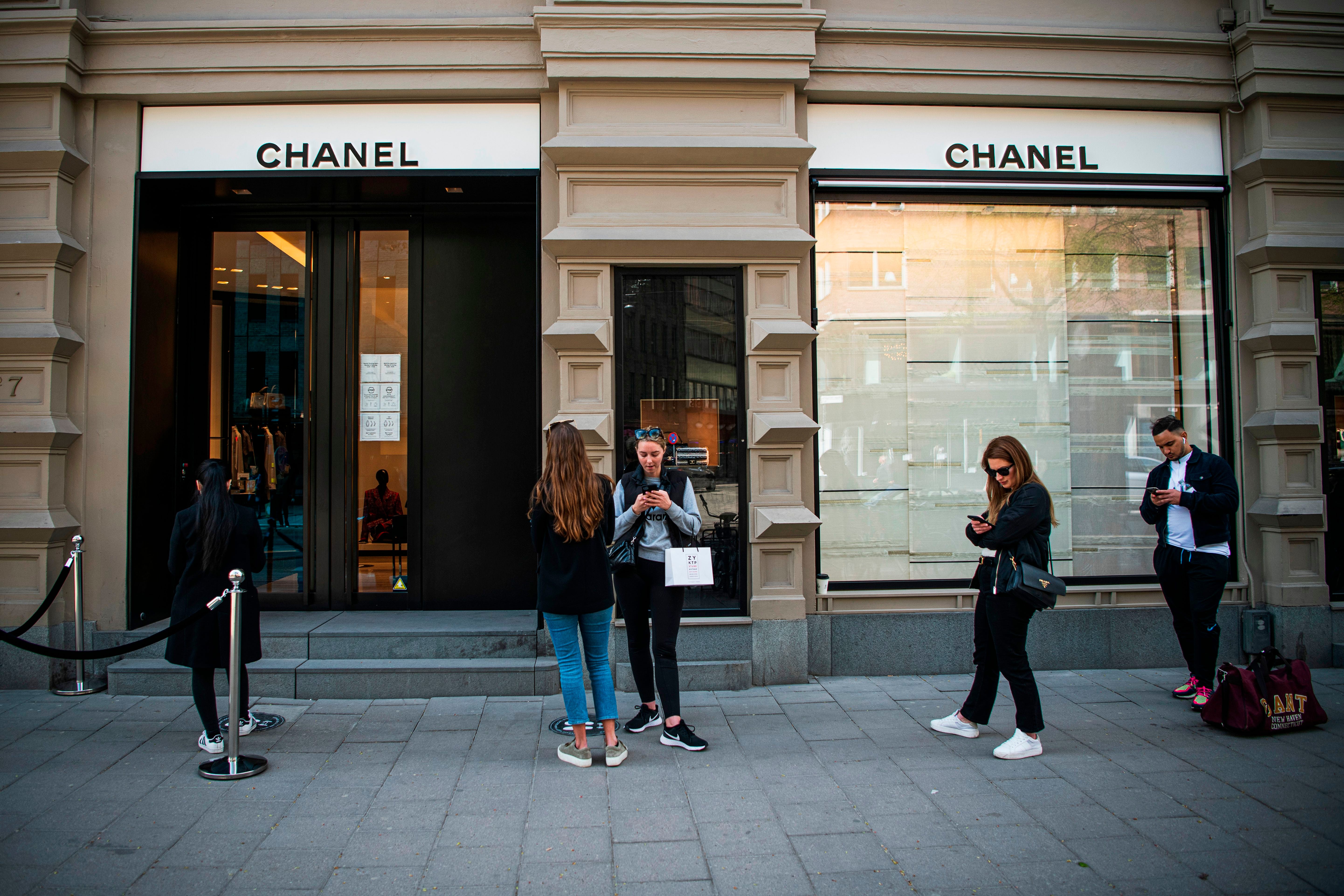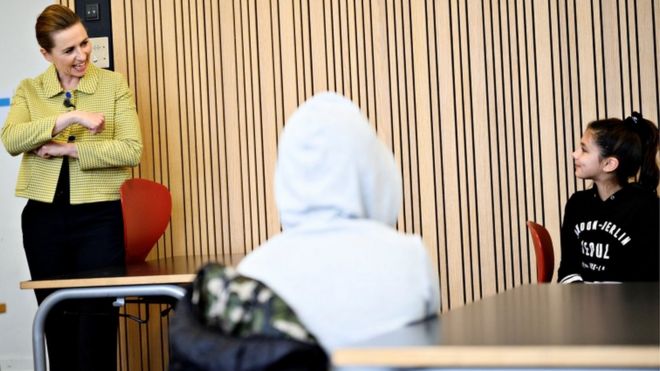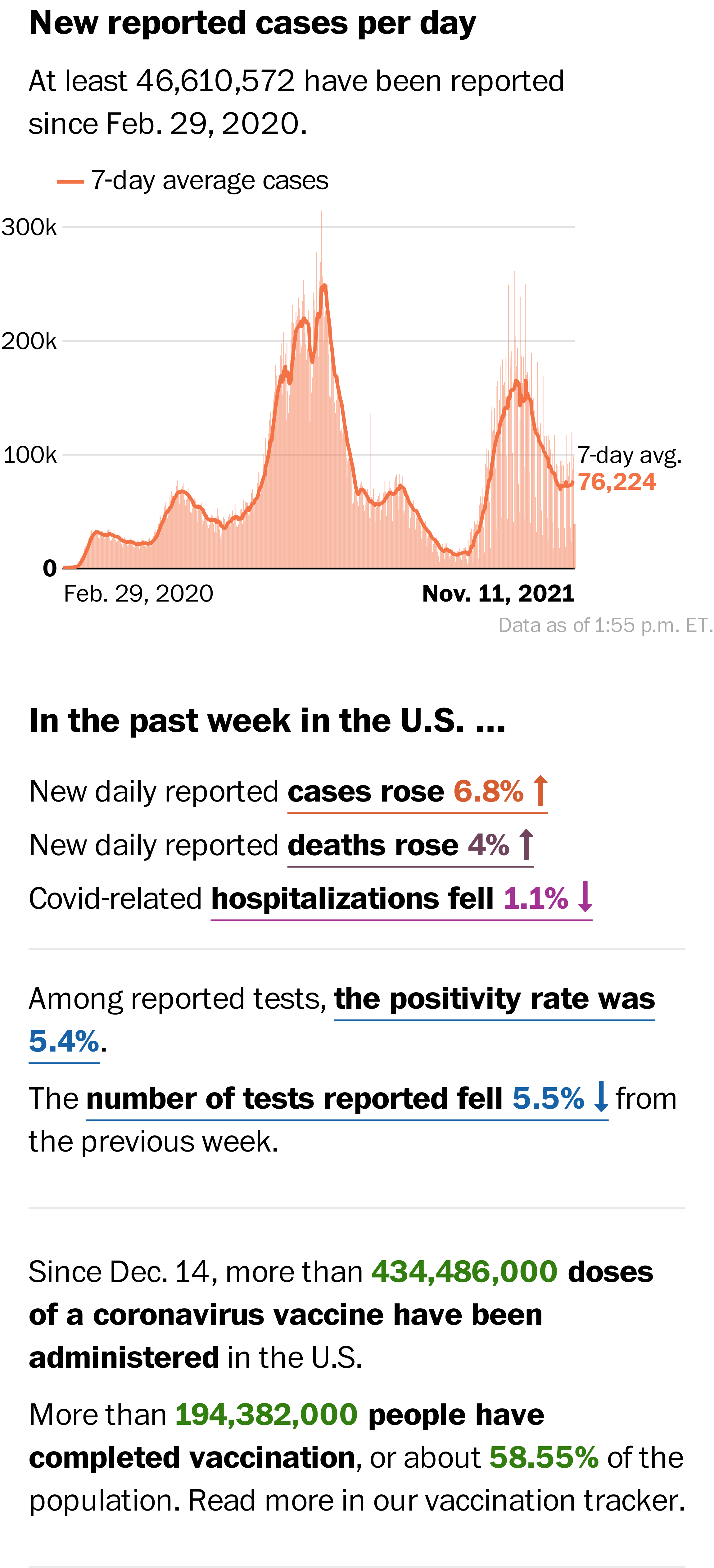Sweden made headlines for never shutting down. Here’s what’s really happening there.

MEDIUM
To outsiders, life in Stockholm, Sweden, appears perfectly normal: Walk down a cobblestone street, and you may see two friends sitting at a cafe enjoying the spring air or a group of kids kicking a soccer ball in the park. Cars and bicyclists may zip by; a family may walk past you on their afternoon stroll.
Whereas most of the Western world has been in lockdown for weeks, Sweden has opted to forgo any sort of shelter-in-place policy in response to the coronavirus and instead allow businesses and parks to stay open and groups of under 50 to gather.
That’s not to say the country hasn’t been proactive at all. The policy in effect in Sweden is similar to what had been implemented in much of the United States before shelter-in-place orders were issued — and the one that will soon be in place in states that reopen. The Swedish government has recommended that people wash their hands frequently, maintain social distance, work from home if they can, and those who are elderly or more susceptible to Covid-19 stay home. The government recommended that universities switch to online teaching; they quickly followed course. Social distance is required by law in restaurants, and bar service is banned. The government changed its sick leave rules to encourage anyone who is feeling symptoms to stay home. “Instead of saying ‘close down all of society,’ we have looked at society and closed down… aspects of society,” where the disease is most likely to spread, Anders Tegnell, the epidemiologist at Sweden’s Public Health Agency in charge of recommending policy to the government, told The Daily Show. “I think that’s had a great effect.”
Sweden’s approach has been hailed by critics of American and European pandemic policies as a less restrictive — and less economically devastating — alternative to state or national shutdowns, but it’s also been lambasted by others as an unnecessarily risky strategy that has led Sweden to have the highest Covid-19 death toll among the Nordic nations. As more and more areas of the United States reopen, Sweden may not be so much an alternative as a glimpse of the future. As of Sunday afternoon, the country had 25,921 confirmed cases and 3,220 deaths, according to the Johns Hopkins Coronavirus Resource Center. These are much higher figures than those of the country’s neighbors, but lower than those in some other wealthy Western European countries on both an overall and population-adjusted basis. Sweden also has suffered problems familiar to residents of countries that have had more severe outbreaks and stricter policies. Nursing homes have been hard hit, and Tegnell described Sweden’s failure to protect nursing home residents as its greatest shortcoming so far. Immigrant and ethnic minority communities also have suffered, due in part to their larger households. Just over half of all households in Sweden in 2016 consisted of only one person, while immigrants were substantially more likely than native-born residents to live in overcrowded conditions or multigenerational households.
As of Sunday afternoon, the country had 25,921 confirmed cases and 3,220 deaths, according to the Johns Hopkins Coronavirus Resource Center. These are much higher figures than those of the country’s neighbors, but lower than those in some other wealthy Western European countries on both an overall and population-adjusted basis. Sweden also has suffered problems familiar to residents of countries that have had more severe outbreaks and stricter policies. Nursing homes have been hard hit, and Tegnell described Sweden’s failure to protect nursing home residents as its greatest shortcoming so far. Immigrant and ethnic minority communities also have suffered, due in part to their larger households. Just over half of all households in Sweden in 2016 consisted of only one person, while immigrants were substantially more likely than native-born residents to live in overcrowded conditions or multigenerational households.
 As of Sunday afternoon, the country had 25,921 confirmed cases and 3,220 deaths, according to the Johns Hopkins Coronavirus Resource Center. These are much higher figures than those of the country’s neighbors, but lower than those in some other wealthy Western European countries on both an overall and population-adjusted basis. Sweden also has suffered problems familiar to residents of countries that have had more severe outbreaks and stricter policies. Nursing homes have been hard hit, and Tegnell described Sweden’s failure to protect nursing home residents as its greatest shortcoming so far. Immigrant and ethnic minority communities also have suffered, due in part to their larger households. Just over half of all households in Sweden in 2016 consisted of only one person, while immigrants were substantially more likely than native-born residents to live in overcrowded conditions or multigenerational households.
As of Sunday afternoon, the country had 25,921 confirmed cases and 3,220 deaths, according to the Johns Hopkins Coronavirus Resource Center. These are much higher figures than those of the country’s neighbors, but lower than those in some other wealthy Western European countries on both an overall and population-adjusted basis. Sweden also has suffered problems familiar to residents of countries that have had more severe outbreaks and stricter policies. Nursing homes have been hard hit, and Tegnell described Sweden’s failure to protect nursing home residents as its greatest shortcoming so far. Immigrant and ethnic minority communities also have suffered, due in part to their larger households. Just over half of all households in Sweden in 2016 consisted of only one person, while immigrants were substantially more likely than native-born residents to live in overcrowded conditions or multigenerational households.
Even with the less aggressive containment measures, the economic effects of the virus have been severe for the country. Sweden’s National Institute for Economic Research projected that gross domestic product would contract by 7% in 2020 and the unemployment rate would rise to just over 10%. The large fall in consumer and business confidence, the institute said in a release, point “to a rapid and severe downturn, not least in large parts of the service sector.”
“The economy will shrink both due to a drop in exports and is already contracting due to lower consumption. But the underlying causes differ: The export sector is mostly affected by the international situation, whereas the drop in consumption is directly related to the government’s recommendation of social distancing,” said Lina Maria Ellegård, an economist at Lund University.
In the first three months of the year, the Swedish economy contracted by less than 1% — less than the United States’ fall — but the production of both goods and services declined in March. The car industry — one of Sweden’s major export sectors — along with real estate, hospitality, and restaurants led the way.
That’s because even without lockdowns or orders, the behavior of Swedes still changed — to an extent. According to data collected by Google and Apple, Swedes have cut back on their travel to places like stores and restaurants and decreased their use of transit-like buses substantially, though not as dramatically as their Nordic neighbors in Denmark. Still, travel over the Easter holiday fell by 90%, Tegnell said on The Daily Show.
Multiple experts in Sweden I spoke to agreed that because a recommendation made by Swedish leadership is culturally viewed as more of a demand, the freedoms allowed have not resulted in free-for-alls. “There’s a basic misconception that there’s one big huge after-ski party,” said Lars Trägårdh, a Swedish historian. “That’s not true.”
Sweden’s voluntary restrictions policy is made possible by the high levels of trust throughout Swedish society. “We have a lot of social trust and a lot of trust in the institutions, and the institutions have confidence in the citizens,” said Trägårdh. “That’s why we decided to have this voluntary approach as opposed to one that’s more hardcore.”
The photos circulating online don’t fully represent the broader reality on the ground either. “I’ve seen pictures in the newspapers and news media of what looks to be crowded restaurants in Stockholm. What I’ve seen is mostly pretty sparse restaurants. Every other table is empty, and there’s very little business,” said Bo Becker, an economist at the Stockholm School of Economics. “Life doesn’t go on as usual, but maybe the lockdown is less severe than in other countries.”
But even if Sweden’s policy of allowing businesses to open and people to move out and about is not that different from some policies American states have or will soon implement, there’s been one major difference: the schools. Schools for children up to age 15 have remained open, all the way down to daycares and preschool. “That makes a world of difference,” Trägårdh told me. “It’s a gender issue.”
Sweden has one of the highest rates of female participation in the labor force for rich countries. Forcing young children to stay home would put many mothers in a bind or even knock them out of the workforce entirely.
“Closing down schools works well if you are in a well-to-do, middle-class family that has a house and a garden and can afford to have one person staying at home,” Trägårdh said. “That may not look like a doable proposition if you are a single parent or do not make a lot of money.”
Shutting down daycare and schools could increase risk as well, Angner explained, by leading working parents to turn to their own parents for help. “If you close daycares, then either one parent has to stop working or grandma or grandpa shows up,” he said. But since the elderly are most at risk, it was even more important to keep schools and daycares open.
Asother countries work through their peak infections, they will have to figure out how to reach a new status quo where the disease’s spread is still slow but restrictions can be lightened. “Now that everybody else is starting to shift toward opening up, people are talking about Sweden,” said Trägårdh. “Other Nordics are realizing you can’t keep schools closed forever. We’re in the long run here. It’s not a 60-meter race, it’s more like a marathon.” While Sweden has a higher death rate than its Nordic neighbors and other wealthy European nations like Germany, it has been lower than rates in the Netherlands, France, and the United Kingdom. According to the Financial Times’ figures, Sweden has seen an 18% jump in excess deaths since the start of the outbreak, while Denmark has seen a 5% rise. Excess deaths in England and Wales are up 37%.
While Sweden has a higher death rate than its Nordic neighbors and other wealthy European nations like Germany, it has been lower than rates in the Netherlands, France, and the United Kingdom. According to the Financial Times’ figures, Sweden has seen an 18% jump in excess deaths since the start of the outbreak, while Denmark has seen a 5% rise. Excess deaths in England and Wales are up 37%.
 While Sweden has a higher death rate than its Nordic neighbors and other wealthy European nations like Germany, it has been lower than rates in the Netherlands, France, and the United Kingdom. According to the Financial Times’ figures, Sweden has seen an 18% jump in excess deaths since the start of the outbreak, while Denmark has seen a 5% rise. Excess deaths in England and Wales are up 37%.
While Sweden has a higher death rate than its Nordic neighbors and other wealthy European nations like Germany, it has been lower than rates in the Netherlands, France, and the United Kingdom. According to the Financial Times’ figures, Sweden has seen an 18% jump in excess deaths since the start of the outbreak, while Denmark has seen a 5% rise. Excess deaths in England and Wales are up 37%.
“The data out of Finland, Norway, and Denmark looks much better,” said Angner. “But everything will hinge on what will happen next.”
There’s some evidence that Sweden has managed to take the heaviest blow from the virus already — about a fourth or fifth of the population of Stockholm may have been infected, which would put the infection rate at a level similar to that found in New York City, which has had many more deaths and been under a near-total lockdown for almost two months. On Tuesday, health officials in Stockholm said the number of new deaths linked to Covid-19 was slowly decreasing from one week to the next. The Swedish example carries both optimistic and pessimistic tidings for the United States as it embraces a partial, scattered reopening cheered on by the White House. It suggests that, even without punitive mandates, people can and will take measures to keep themselves safe from the disease. But even though people are protecting themselves without formal orders, the economy will be only slightly better off than it was under lockdown. Meanwhile, the American push to reopen is being driven by distrust of the government combined with the absence of robust safety-net programs to stem the economic bleeding. In the American context, Sweden’s example may be no example at all.
The Swedish example carries both optimistic and pessimistic tidings for the United States as it embraces a partial, scattered reopening cheered on by the White House. It suggests that, even without punitive mandates, people can and will take measures to keep themselves safe from the disease. But even though people are protecting themselves without formal orders, the economy will be only slightly better off than it was under lockdown. Meanwhile, the American push to reopen is being driven by distrust of the government combined with the absence of robust safety-net programs to stem the economic bleeding. In the American context, Sweden’s example may be no example at all.
 The Swedish example carries both optimistic and pessimistic tidings for the United States as it embraces a partial, scattered reopening cheered on by the White House. It suggests that, even without punitive mandates, people can and will take measures to keep themselves safe from the disease. But even though people are protecting themselves without formal orders, the economy will be only slightly better off than it was under lockdown. Meanwhile, the American push to reopen is being driven by distrust of the government combined with the absence of robust safety-net programs to stem the economic bleeding. In the American context, Sweden’s example may be no example at all.
The Swedish example carries both optimistic and pessimistic tidings for the United States as it embraces a partial, scattered reopening cheered on by the White House. It suggests that, even without punitive mandates, people can and will take measures to keep themselves safe from the disease. But even though people are protecting themselves without formal orders, the economy will be only slightly better off than it was under lockdown. Meanwhile, the American push to reopen is being driven by distrust of the government combined with the absence of robust safety-net programs to stem the economic bleeding. In the American context, Sweden’s example may be no example at all.










 There was Idris Bey, 60, a U.S. Marine and New York City Fire Department E.M.T. instructor who received a medal for his actions after the Sept. 11 attack.
There was Idris Bey, 60, a U.S. Marine and New York City Fire Department E.M.T. instructor who received a medal for his actions after the Sept. 11 attack. There was Rana Zoe Mungin, 30, a New York City social studies teacher whose family said she died after struggling to get care in Brooklyn.
There was Rana Zoe Mungin, 30, a New York City social studies teacher whose family said she died after struggling to get care in Brooklyn. There was Valentina Blackhorse, 28, a beautiful young Arizona woman who dreamed of leading the Navajo Nation.
There was Valentina Blackhorse, 28, a beautiful young Arizona woman who dreamed of leading the Navajo Nation.

 Correction officers in New York City live in fear of bringing the virus home to families. They say the city has not protected them.
Correction officers in New York City live in fear of bringing the virus home to families. They say the city has not protected them. More than 160 inmates and 130 staff members at the Rikers Island jail complex have been infected with the virus.Credit...Todd Heisler/The New York Times
More than 160 inmates and 130 staff members at the Rikers Island jail complex have been infected with the virus.Credit...Todd Heisler/The New York Times Coronavirus ‘does not spread easily’ on contaminated surfaces: CDC
Coronavirus ‘does not spread easily’ on contaminated surfaces: CDC
 Cuomo: Westchester to reopen Tuesday as COVID-19 deaths drop below 100 for first time since March
Cuomo: Westchester to reopen Tuesday as COVID-19 deaths drop below 100 for first time since March
 Sami Adamson, a freelance scenic artist, had to wait more than two months to collect unemployment benefits from New Jersey after applying.Credit...Hannah Yoon for The New York Times[/caption]
Sami Adamson, a freelance scenic artist, had to wait more than two months to collect unemployment benefits from New Jersey after applying.Credit...Hannah Yoon for The New York Times[/caption]





